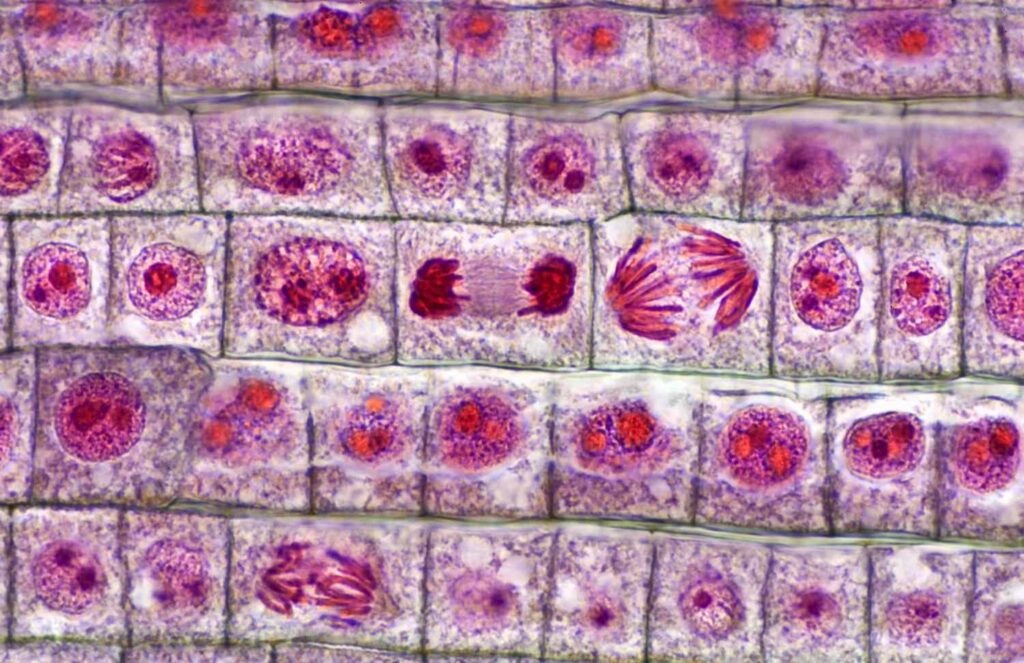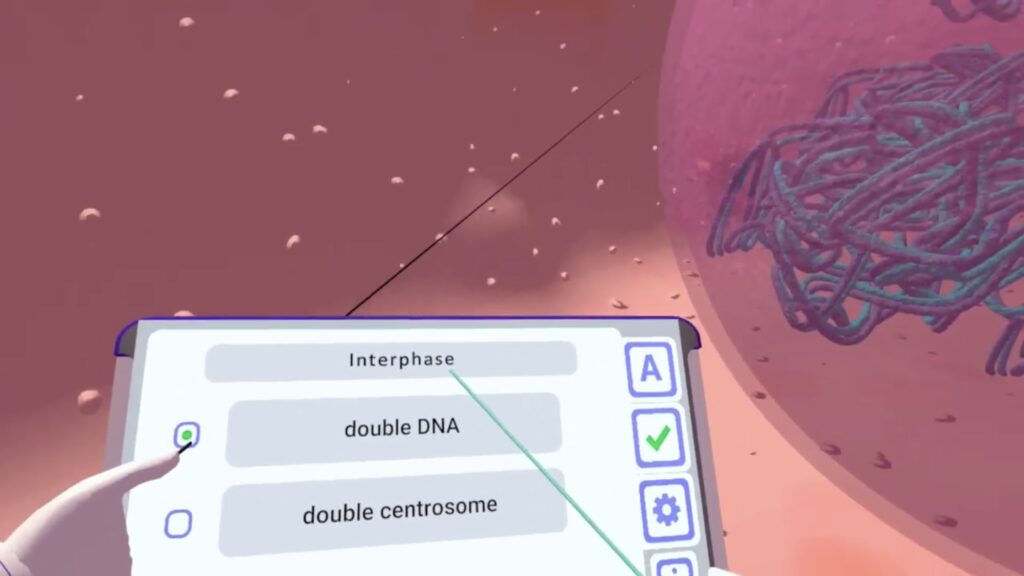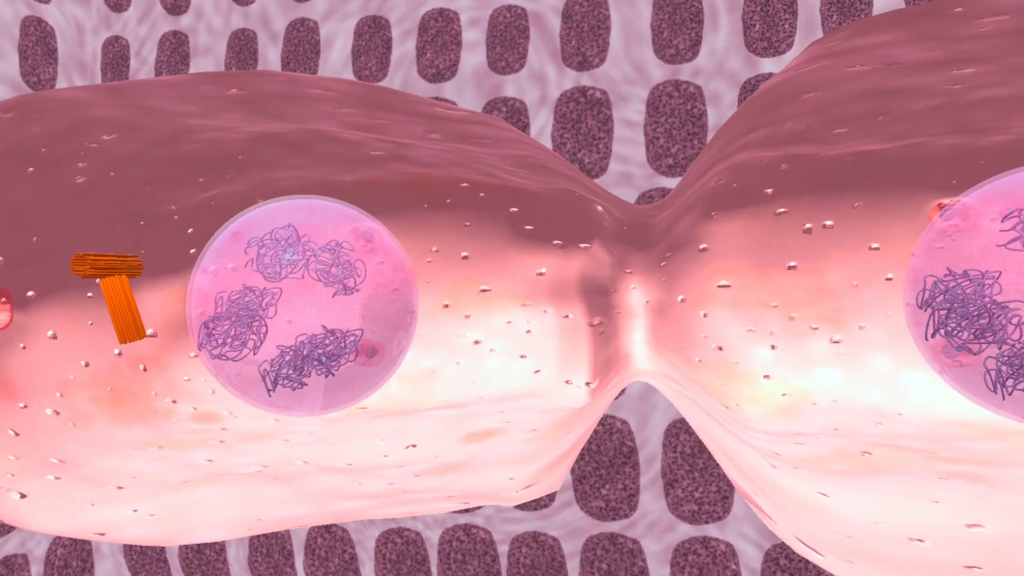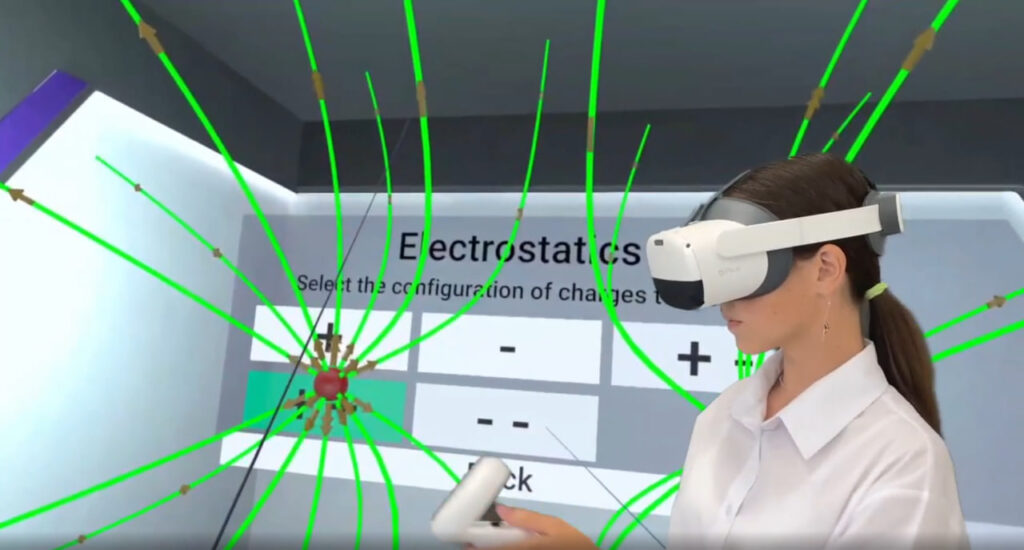

Mitosis is one of the most complex topics in the high school biology curriculum. Its intricacy arises from two primary factors:

Traditional teaching methods often rely on static diagrams or microscope slides to illustrate the stages of mitosis. While these tools are valuable, they present limitations:
Educators worldwide acknowledge the difficulties students face when learning this critical biological concept.

XReady Lab addresses these challenges by harnessing the power of virtual reality in education. XReady Lab VR Mitosis simulation transforms the way students learn about cell division, making it more engaging, understandable, and memorable.

The VR biology simulation on cell division mitosis is the perfect tool for students and educators alike. With immersive visuals and interactive features, this VR lesson allows students to witness the complex process of cell division in a way that textbooks simply cannot replicate. Experience the future of learning with VR Mitosis!
Our VR Mitosis simulation aligns with major educational curricula, making it suitable for classrooms worldwide:

Rather than passively observing diagrams, students become active participants in the mitotic process. Among the many actions they can perform, for example:
This hands-on approach transforms a theoretical concept into a practical experience, fostering deeper understanding and engagement.
Our VR simulation provides a safe experiment setting, utilizing the student’s exploratory curiosity. A checklist guides them through each stage’s events, encouraging independent exploration of cellular structures.
By performing all events independently, students can recount the process in their own words:
This personal involvement reinforces understanding and aids long-term retention.

Sometimes, it’s not just complex topics like photosynthesis or mitosis that challenge students, but anything related to phenomena that can’t be directly observed in real life. Virtual reality is exceptionally effective for biology, allowing immersion into cell structures and processes that are otherwise invisible.

With VR, students can dive into the microscopic world, exploring the intricacies of cells and their components. This immersive experience makes abstract concepts tangible, enhancing comprehension and retention.
See for yourself by trying the VR Plant Cell demo kit.
By exploring the VR Plant Cell simulation, educators and students can witness firsthand how VR transforms learning in biology. The demo provides an interactive journey through the plant cell, highlighting organelles and their functions in a way that textbooks cannot replicate.
In addition to mitosis, VR technology can revolutionize how other complex biological processes are taught:
By making the invisible visible, VR opens up new possibilities for interactive classroom activities that enhance learning and spark curiosity.

The declining interest in STEM subjects among high school students is a significant concern. Complex and abstract topics like mitosis often contribute to this decline. By integrating virtual reality learning into the curriculum, educators can:
Learn more about how VR revitalizes interest in STEM in our article: Why Interest in STEM Declines and How VR Revives It
Implementing VR in the classroom is a step toward creating an interactive classroom that leverages technology to enhance learning.
XReady Lab VR Mitosis revolutionizes the way students learn about one of biology’s most complex topics. By transforming passive observation into active participation, XReadyLab VR simulation enhances understanding, retention, and enjoyment.
Don’t let your students miss out on this revolutionary learning experience. Embrace the future of science education with XReady Lab’s VR simulations and watch as your students’ understanding and enthusiasm for science soar to new heights.
Experience mitosis like never before. Dive into the cell and become part of the process with XReady Lab VR Mitosis.
Frequently Asked
We prodive VR biology, VR physics, and VR chemistry simulations. Please, check our catalog.
Please, fill the form to get demo labs for free.
Please contact our customer support service at support@xreadylab.com or book a call with the team to find out the conditions and book the VR class set up at your school.
Subscription to XReady Lab interactive VR labs. If you are a school, then you are also given access to the VR classroom system. VR class system helps you easily launch VR lessons for a large number of students, follow the experience of each student, as well as customise the content without developers.
We adhere to the world’s generally accepted recommendations and research. Our products are suitable for children from 12 years old.